THEY SEEM SO HUMAN BUT THEY ARE VERY ALIEN

TECHNOLOGY SCIENCE ENTERTAINMENT





in the present era of fast changing technological world, there is a merging of academic 昀椀elds and a booming of creative ideas at the crossroads of various disciplines. The driving force behind this transformation is the dedication and creativity of our students. Our distinguished Arti昀椀cial Intelligence Faculty is fortunate to observe a coming together of exceptional talents and knowledge across various majors, including Arti昀椀cial Intelligence, Cybersecurity, Data Science, Digital Forensics, and Virtual Reality.
In light of the worthy accomplishments of our students, it is crucial to acknowledge the signi昀椀cant importance of extracurricular activities and encourage other students to develop their abilities beyond the traditional academic program. The creation of our student-led journal, which has been developed through the joint e昀昀orts of students from diverse majors, undoubtedly demonstrates the enthusiasm and interdisciplinary approach of our faculty. This journal acts as a venue to exhibit the innovative work of our students, educating a culture that values and acknowledges their contributions to the continuously evolving boundaries of technology.
Nevertheless, our celebration must not be limited to the pages of our journal; instead, it should act as an advocate for additional investigation and advancement. Extracurricular activities play a crucial part in fostering the abilities and skills that are necessary for success in the ever-changing empire of technology. These activities o昀昀er our students the opportunity for experimentation and innovation, enabling them to explore their passions and exceed the limits of what can be achieved within a rigid educational program.
Furthermore, the foundation of technological advancement resides in interdisciplinary cooperation. Through participation in extracurricular initiatives that include various 昀椀elds, our students not only expand their knowledge and understanding but also develop crucial abilities in teamwork, communication, and the identi昀椀cation and resolution of issues. In a world where complex problems demand a range of viewpoints and cooperative approaches, these skills are of most importance and hold huge value.
In addition, our students are equipped with the means to independently guide their educational journey by participating in extracurricular activities. These activities allow them to adapt their learning experience to align with their distinct interests and ambitions. Whether it involves reaching expertise in new programming languages, enhancing English language 昀氀uency, or obtaining hands-on training through internships and real-world projects, our students have the chance to growth their future and acquire the necessary abilities to excel.
Furthermore,asidefrompromotingindividualdevelopment,extracurricularactivitiesalsoprovide our students with a means to actively participate in the broader society and e昀昀ect substantial change. By contributing in activities such as community outreach initiatives, technological hackathons, or partnerships with nearby establishments, our students can e昀昀ectively utilize their expertise and understanding to tackle practical di昀케culties encountered in the real world, thereby adopting a commitment to public services and generating a favorable impact.
As we celebrate the accomplishments of our students in the Arti昀椀cial Intelligence Faculty, it is vital that we acknowledge the signi昀椀cance of continuous enhancement and everlasting education. It is our duty to motivate our students to step out beyond their comfort zone, accept novel challenges, and seize each and every prospect for progress and advancement. By actively engaging in extracurricular activities, attending educational sessions, workshops, conferences, and pursuing individual projects, our students can broaden their understanding, re昀椀ne their abilities, and foster the 昀氀exibility and perseverance essential to successes in a dynamic world.
Prof. Omar A. AlZubi
Dean of Faculty of Arti昀椀cial Intelligence


Welcome to the faculty of AI Chain Magazine! Get ready to dive into the exciting world of our magazine. Whether you’re a seasoned expert or just starting out, there’s something here for everyone.
Within these pages, you’ll 昀椀nd a treasure of insights, ideas, and innovations shaping the future of AI. From breakthrough research to practical applications, our magazine is your gateway to understanding the latest trends and developments in this rapidly advancing 昀椀eld. Whether you’re looking to expand your knowledge, connect with like-minded individuals, or simply stay informed, you’ve come to the right place.
So sit back, relax, and let the journey into the fascinating world of arti昀椀cial intelligence begin!

General Supervisor of CHAIN Magazine

Welcome to the world of CHAIN, where innovation meets exploration! Our inaugural issue is a testament to the boundless creativity and dedication of our team. Dive into the captivating realm of Arti昀椀cial Intelligence, tailored especially for students in the AI department and curious minds alike.
With originality at our core, we’ve curated a collection of thought-provoking articles, creative works, and mind-blowing scienti昀椀c wonders. From scouring countless sources to collaboratingwithinsightfulcontributors,everypageispackedwithinspirationanddiscovery.
As we embark on this exhilarating journey, we invite skilled designers and writers to join our team. If you’re ready to unleash your imagination and contribute to future issues, take the 昀椀rst step by 昀椀lling out our application form https://forms.gle/K17GgR618xkiP7sH9.
Got questions or eager to learn more? Reach out to us at chainmagazine1@gmail.com. Let’s explore the endless possibilities together. Thank you for joining us on this thrilling adventure!
Thank you for reading!



Amin Al-Sadi, Chain President




Managing Director

General Supervisor
Dr. Aryaf Al-Adwan
Managing Director
Amin Al-Sadi
Owen Sumadi
Editor-in-Chief
Karam Yaseen

editor-in-chief
karam yaseen
Designer
leen al oyoun
Editorial ! Recruiting ! Design
Amin Al-Sadi
Leen Al Oyoun
Link Robot Design
Leen Al Oyoun
Contributors
Alia Assilah
Aziz Sari
Belal Lahham
Ezzeddin Ezzeddin
Heba Hijjawe
Lubna Abu-Rumman
Mahmoud Fawair
Majd Al-Assi
Mohammed Al-Jadallah
Rama Majdalawi
Raneem Hassan
Sameer Fakhoury
Sarah Sultan
Zein Al-Khiri

14 beyond words

16 crypto chronicles
20 the story has no ending
18 cyber security vs digital forensics
22 The battle between codemakers and codebreakers
24




you have no privacy, get over it


Welcome to Chain Magazine!
I'm Link Link, your guide through this multidimensional journey. Prepare yourself for an exploration into captivating realms of science science, art art, and technology technology.

Not just a technological novelty, what was once a science-昀椀ction is now at our 昀椀ngertips, a tangible reality! from immersive gaming experiences that transport players to other worlds to virtual concerts and events, VR has revolutionized how we engage with media. Mark Zuckerberg has claimed that 3D is an inherently more intuitive interaction model for humans than 2D websites, apps, and video calls—especially in social use cases. Certainly, humans did not evolve for thousands of years to use a 昀氀at touchscreen!
dont make me choose between the past and the future, i want it all: “My friend in the US and I, who live in Korea, met at Metaverse Engage and experienced the sinking of the Titanic.” VR is utilizing an exceptional way of socializing beyond time and space! You can hang out with your long-distance friends from the comfort of your room, wherever and whenever you like! Don’t book that ticket, instead put on your HMD, and enter any timeline you want! The future of social media and entertainment will entirely change as it will involve remixing of both interaction and 昀椀lm. We can expect rich interconnection between 昀椀lm and interactive experiences. You can be a part of the titanic and experience the love story of Jack and Rose, or the sinking of the ship, but I prefer the 昀椀rst. (HMD: A headmounted display is a display device, worn on the head or as part of a helmet, that has a small display optic in front of one or each eye)
METAVERSE: For decades, the primary reason to build a virtual world was for a video game, such as The Legend of Zelda or Call of Duty, or as part of a feature 昀椀lm. This is why the Metaverse is often misdescribed as a game or entertainment experience. The purpose of a virtual world can be “game-like,” which is to say there is an objective such as winning, killing, scoring, defeating, or solving,

or the purpose can be “non-game-like” with objectives such as educational or vocational training, commerce, socializing, meditation, fitness, and more. However, to e昀昀ectively utilize this technology, education is inevitable. It is essential to educate end-users on how to keep up with these advancements. By doing so, we can achieve the full potential of VR integration in various sectors and other innovative purposes. (Metaverse: a virtual-reality space in which users can interact with a computer-generated environment and other users.)
A NEW DIMENSION OF HEALING: BONDFIRE PROJECT: Intherealmofhealthcare, VR is being utilized for therapeutic purposes, Like in the Trauma Informed Spatial Computing XR Therapy. It o昀昀ers a unique opportunity to create controlled, therapeutic environments where individuals can safely confront and process their trauma. It is an innovative approach thatextendsthehealingpotentialoftrauma-informedcareintothedigitalspace.Bycombining the immersive power of XR with a deep understanding of trauma’s impact, this project o昀昀ers new avenues for recovery and empowerment. (Extended reality (XR): an umbrella term that covers technologies, including AR, MR, and VR.)
spatial computing reimagined: Wearables will shrink in size and increase in performance! This will help users enhance their interactions with the Metaverse and enable them to interact with it in more places. Carrying your AVP everywhere you go is just not practical! The future of spatial computing isn’t merely a pair of AR glasses, or another kind of wearable, but something smaller. Mojo Vision started in 2015 on a path to make an extremely small display, one that would 昀椀t into a contact lens. This new technology will dramatically improve display quality and the size limitation of the HMD in spatial computing.
BY ALIA ASSILAH

B A R R I E R S : When an idea comes to your mind,” write it down...” Why? Honestly, this idea came to me one day: that we, as able individuals, can easily translate someone’s speech or writing into another language. But what about the deaf and mute who communicate through sign language? How can they translate signs into another language? And how can people who don’t understand sign language communicate with those who do, and vice versa? I wondered why I study AI and why I don’t solve problems through AI. That’s where my idea came in: to create a robot that translates sign language from one language to another for the person communicating with it.
THE PROBLEM: How can the deaf and mute communicate with people speaking a language other than their own, whether those people are deaf, mute, or not? And how can natural speakers understand sign language, if they don't have knowledge of sign language?
AI SOLUTIONS: Yes, there are several solutions I will present to you, and we'll see if they solve the problem.
SMART GLASSES: Smart glasses help the deaf read conversations around them. XRAI Glass, developed by Nreal's AR glasses, allows the deaf and hard of hearing to engage in real-time translated conversations within their 昀椀eld of vision. These glasses have a microphone to capture sound, then send it to the phone, and then convert the conversations into readable texts. Through this technology, which recognizes voices and identi昀椀es speakers, the deaf and hard of hearing can participate in conversations and communicate with others easily. These glasses project the text onto the lenses in front of them. And the conversations captured by these smart glasses are stored only on the user's phone instead of the cloud, ensuring user privacy and guaranteeing no eavesdropping on their conversations. The price of these glasses is approximately $483.
This is one of the solutions I found, which can potentially help the deaf and mute. But of course, there are drawbacks to it, in my opinion.
PROJECT IDEA: Simply put, I want to manufacture a robot with a hand resembling a human hand so that the robot has 昀椀ngers to use sign language. If there is someone who speaks sign language, for example, and his language is Arabic, and this person wants to communicate with another person who speaks sign language but his language is English, this robot will help by understanding sign language from the 昀椀rst person and translating it into English sign language. And even the robot's function is not limited to that alone; it can also translate sign language into speech or sound for the person who does not speak sign language. MY IDEA IS TO SOLVE THE PROBLEM OF DIFFICULTY IN COMMUNICATING WITH THE DEAF AND MUTE, GIVING THEM MORE IN COMMUNICATING WITH THE FREEDOM AND INTEGRATING THEM INTO THE ENVIRONMENT LIKE ANY OTHER NATURAL PERSON. THEM
HUMANOID ROBOTICS : the 昀椀eld of robotics aims to design and develop robots that resemble humans in appearance and movement. Humanoid robots are characterized by their abilitytointeractwiththesurroundingenvironment,enablingthemtoperform tasks that require interaction with humans.

The design of humanoid robots relies on various technologies and principles, including sensing technology to perceive the environment and movement, control and planning techniques to execute movements accurately, and arti昀椀cial intelligence technology to enable robots to make decisions and interact intelligently with users. Despite its bene昀椀ts, it has drawbacks such as production cost, control di昀케culty, social compatibility, and expressive capability.
ENGAGEMENT AND FUTURE DEVELOPMENT: If you were someone who speaks sign language, what would your reaction be to this project? To what extent do you expect arti昀椀cial intelligence to develop this idea? And what ideas do you have to contribute to improving this project, and did you like it?


Once upon a time, in the shadowy recesses of the internet, there existed A CLANDESTINE MARKETPLACE KNOWN AS “CRYPTOFRUITSTAND.” IT WASN’T YOUR TYPICAL FRUIT STAND, MIND YOU. INSTEAD OF APPLES AND ORANGES, THEY PEDDLED DIGITAL DELIGHTS: BITCOIN, ETHEREUM, AND A SUSPICIOUSLY RIPE AVOCADO NFT.
Our protagonist, Bob the Hacker (not to be confused with Bob the Builder), stumbled upon CryptoFruitStand while browsing the Dark Web. He wore a hoodie, had a neckbeard, and spoke in binary. Bob’s mission? To buy a lifetime supply of Bitcoin using his grandmother’s vintage typewriter as collateral.
Bob 昀椀red up his Tor browser, which looked like a cross between a browser and a tortilla chip. It promised anonymity, but it also made him crave salsa. As he typed in the URL, the screen 昀氀ickered, revealing a dancing avocado emoji. “Welcome to CryptoFruitStand!” it proclaimed. Bob wondered if he’d accidentally stumbled into a vegan support group.
Bob’s 昀椀rst purchase was a Bitcoin blender—a magical contraption that mixed your coins until they were untraceable. It was like a smoothie maker for 昀椀nancial privacy. Bob poured in his Bitcoins, added a dash of unicorn tears, and hit “Blend.” The blender whirred, and out came a freshly minted Ethereum. Bob was confused. Apparently, the blender had a sense of humor.
Ethereum, the mischievous cousin of Bitcoin, pranced around like a tipsy unicorn. It wore a smart contract as a party hat and whispered, “Hey, Bob, want to create your own decentralized app?” Bob hesitated. He’d once tried to build a birdhouse and accidentally crashed the stock market. But sure, why not? He named his app “CryptoKittens for World Peace.”
In a corner of CryptoFruitStand, Bob found an NFT shaped like a banana peel. It was labeled “Rare Collectible: Slippery When HODLing.” Bob bought it, hoping it would grant him wisdom. Instead, it whispered, “You are one peel away from 昀椀nancial enlightenment.” Bob slipped on a banana peel and fell into a rabbit hole of DeFi memes.
As Bob exited CryptoFruitStand, he noticed a sign: “Exit Scam Exit.” It led to a secret room where shady characters exchanged their ill-gotten gains for Monero. Bob considered joining but decided against it. He’d rather stick to his day job—writing code for a blockchain-powered cat cafe.
And so, dear readers, our tale ends with Bob sipping a piña colada on a tropical beach. He’d converted his crypto fortune into a CryptoPineapple—an exotic fruit that tasted like decentralization and moonshots. As the sun set, Bob pondered life’s mysteries: Why is Bitcoin like a pineapple? Because both can be quite prickly.
REMEMBER KIDS, WHEN LIFE GIVES YOU LEMONS, TRADE THEM FOR NFTS. AND WHEN LIFE GIVES YOU BITCOIN, MAKE SURE IT’S BLENDED WITH A DASH OF UNICORN MAGIC.
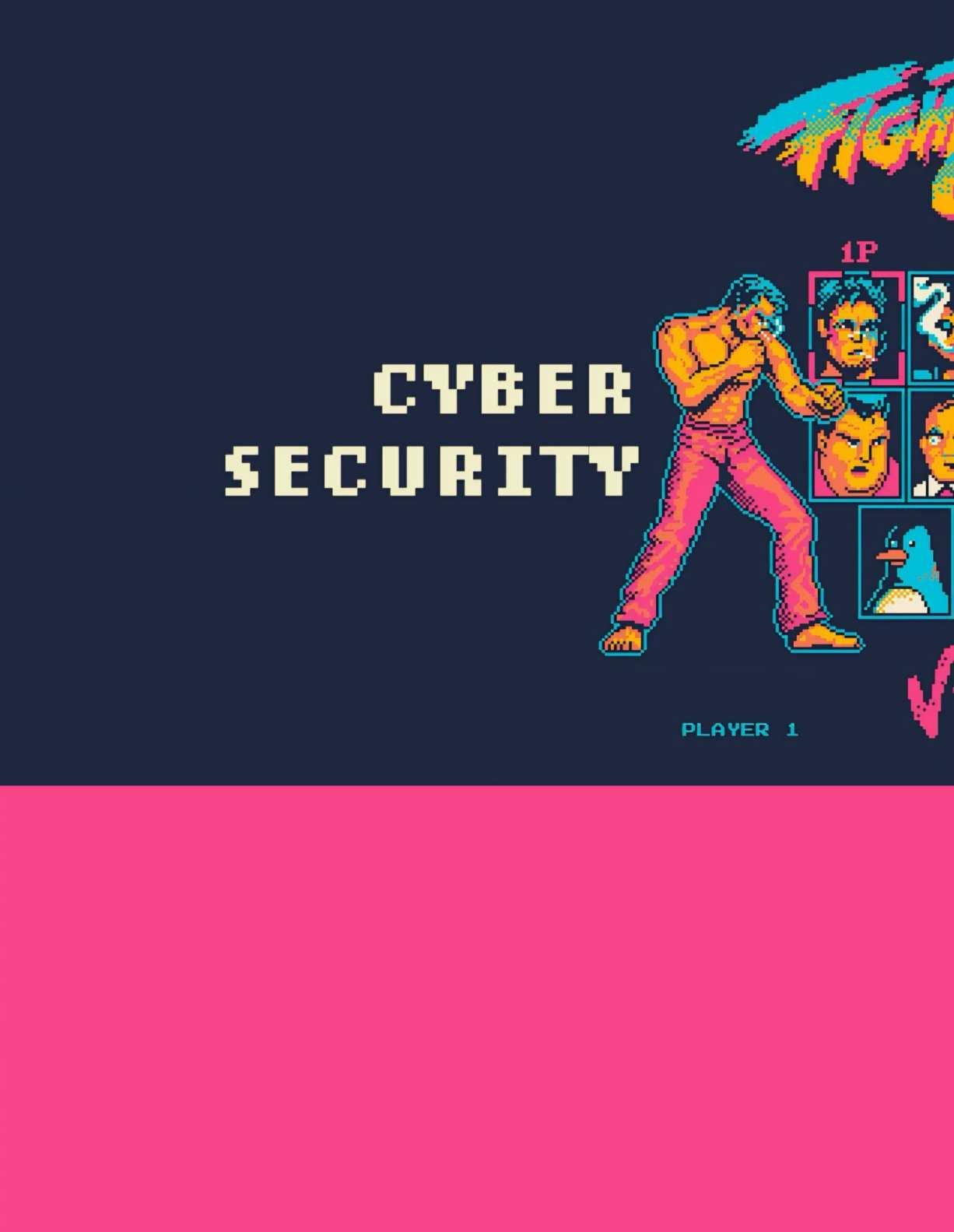
Most people don’t know what the di昀昀erence between these 昀椀elds are, we can say the work they do is very similar but there is a di昀昀erence. Before we learn the di昀昀erence, we need to know what the de昀椀nition of cyber security and digital forensics is.
Cybersecurity is developing, implementing, and auditing security mechanisms that protects information and data from digital attacks. Working in the 昀椀eld involves predicting and detecting vulnerabilities to prevent cyberattacks before they happen as an example is Information Cybersecurity Analyst where they monitor, detect, and respond to cyber threats, ensuring data protection. Another example is a Junior Penetration Tester where they simulate cyber-attacks on computer systems or networks to identify vulnerabilities meaning that their role involves using various tools and techniques to ethically hack into systems and report any 昀椀ndings.
Digital forensics is the gathering, analyzing and retrieving of electronic data, assets, and evidence. The goal is often to identify the individuals behind, and mechanisms used for hacking or malware and sources of data breaches. Working in this 昀椀elds involves investigating, researching and understanding digital and physical techniques or devices, as an example is Cybercrime Investigator that includes investigating hacking, data breaches, identity theft, and online fraud and collaborate with law enforcement agencies during these criminal investigations. Another example is Forensic Lab Manager where a person oversees the operations of a digital forensics laboratory, including

managing forensic analysts, maintaining forensic tools and equipment, developing standard operating procedures (SOPs) and providing technical expertise and guidance.
After understanding the meaning of both 昀椀elds, we can see the di昀昀erence, where in cyber security the goal is to is to maintain the con昀椀dentiality, integrity, and availability of information assets leading to its protection as well as detect vulnerabilities and prevent attacks. On the other side, digital forensics goal is to uncover and analyze digital evidence in a way that preserves its integrity and admissibility for investigative or legal purposes leading to analyzing and recovering data, discovering the way hackers work, and collect evidence. We can also say that cybersecurity works to prevent attacks meaning that its proactive and ongoing, and digital forensics works after the attack happens meaning that its reactive. Where do cyber security and digital forensics overlap? Both involve identifying vulnerabilities and weaknesses and focus on the protection of digital assets such an example would be demonstrated in malware analysis, threat hunting and incident response. After all the collaboration between cybersecurity and digital forensics is not just a partnership but it’s a symbiotic relationship that forti昀椀es our defenses, illuminates hidden threats, and empowers us to navigate the complexities of modern cyber landscapes with resilience and clarity.


Greetings! Today, I am excited to provide a con昀椀dent response to a question that has been widely debated: is there a de昀椀nite conclusion to the advancement of arti昀椀cial intelligence?
To unravel this mystery, we must travel back in time to 1956, when a pivotal conference held by Dartmouth College introduced a groundbreaking concept that would come to be known as arti昀椀cial intelligence.
The subject of AI has captivated the minds of innovators and researchers alike, resulting in an impressive 1.6 million articles on the topic. While the journey has not been without its challenges, progress has persisted. However, there was a setback from the AI spring to be replaced by AI winter. This nascent specialization has been struggling to 昀椀nd its footing from 1974 until 1980.
Over time, with the rapid growth of computational power and the accumulation of large volumes of data and their sharing, many new 昀椀elds emerged for the development of AI technology. However, in 1987, the collapse during the manufacturing of specialized AI devices led to another cloudy winter for arti昀椀cial intelligence.
Since 1993, data has been the primary catalyst for the incredible advancements in AI, instilling a sense of great optimism and unparalleled success. The exponential growth in data volume, increased connectivity, and computing power have all played a pivotal role in driving multiple breakthroughs, leading to a proliferation of patents related to AI. It is undeniable that the future of arti昀椀cial intelligence is indeed very promising and full of potential.
Thanks to incredible technological advancements, AI has become an incredibly valuable and practical tool that addresses a variety of challenges and issues we face in our daily lives. AI has proven to be an e昀昀ective solution to a range of problems, alleviating some of the burdens we carry.
• Interview.ai is an AI-powered tool for job interview preparation. It o昀昀ers virtual interviews to re昀椀ne speaking skills and train for real interviews. Using algorithms, it generates custom questions based on provided job information.
• AI is improving medical diagnosis by recognizing patterns in medical images. It also creates personalized treatment plans based on a patient’s genetic pro昀椀le, lifestyle, and similar patients’ responses to treatments.
Furthermore, it can provide an e昀昀ective solution to existing problems that lack a fundamental one. Gas leakage is a communal problem worldwide and unfortunately, there is no de昀椀nitive solution for it yet. However, with the help of arti昀椀cial intelligence, we can prevent the damage that results from this problem, such as explosions or su昀昀ocation. This can be achieved by designing a device that contains sensors to measure the oxygen pressure and the pressure of gases composing the gas, such as methane, nitrogen, oxygen, carbon dioxide, argon, hydrogen, helium, and acetylene in the surrounding atmosphere periodically. If the pressure values exceed safe levels, the device will sound an audible alarm to alert the individual of the potential danger, allowing them to shut o昀昀 the source of the leak before it is too late. Even if they are not at home, the connected application can help them take immediate action. It enables them to turn o昀昀 the gas supply or the a昀昀ected part of the pipe remotely, and even automatically open windows for ventilation until they return. This advanced technology o昀昀ers peace of mind and ensures their safety and that of their loved ones.
ARTIFICIAL INTELLIGENCE IS A GAME-CHANGER, REVOLUTIONIZING THE WAY WE SOLVE PROBLEMS AND SIMPLIFY OUR DAILY LIVES AND IT IS A DYNAMIC FORCE, CONSTANTLY EVOLVING TO MEET OUR EVER-CHANGING DEMANDS. So, in response to your question of whether arti昀椀cial intelligence has an inevitable end or not? The answer is no; It is an indispensable concept that will undoubtedly continue to thrive and progress. As such, the possibilities for AI are limitless, and we can anticipate a bright future where it will continue to elevate our world for the greater good.
Thus, we are left with a story that has no ending.
BY Lubna Abu Rumman
As history unfolds through the ages, humans have always been opposing each other. One of the many wars, one that still persists, the battle between codemakers and code breakers.
Going back to the roots of this enormous battle, it all started when the 昀椀rst type of ciphers appeared in the times of the Greeks and pharos, these ciphers were alphabetical based, such as ceaser cipher however It wasn’t until the Arabs made the term “crypto” and “cryptoanalysis ” an existing term, shaping the cryptography of today.
With the evolution of science as a whole, cryptography also evolved, leading to the rise of complex mathematical algorithms. Some of these algorithms are quite strong and, with the perfect key, could take ages to break even by a supercomputer. This marked the last era before entering the age of quantum computers, which is looming closer.
Quantum is a branch of physics focusing on the photon, the smallest basic building block of light. In the world of computer science, we refer to it as a qubit (quantum bit). Qubits are signi昀椀cantly more complicated than normal electrons. A daily-life example of this di昀昀erence is the contrast between a 昀椀ber cable and a copper cable.
The concept of quantum computers has existed for a long time. However, it was only recently that they became a reality. Quantum computers operate mainly by transferring photons, not electrons. What makes these computers even more unique is their ability to perform tasks much faster than a normal computer or even a supercomputer. Consequently, the time required to break an encryption using quantum computers is much shorter, posing a signi昀椀cant threat to the current world of cryptography. As a result, many new concepts have emerged to address these challenges.
Pre-quantum cryptography refers to all the classical algorithms that appeared before quantum computers. An example commonly used today is RSA.

Post-quantum cryptography refers to techniques developed to resist both classical and quantum computers. One example is lattice-based cryptography, where a lattice in math refers to a discrete set of points arranged in a regular, periodic pattern in n-dimensional space.
Quantum cryptography uses quantum physics concepts to create cryptographic systems that are theoretically immune to quantum computers.
Quantum cryptography is one of the most heavily studied fields at the moment , and one example of it is QKD, where it relies on the quantum properties to securely distribute keys between parties. For example, in a connection between Alice and Bob, if an attacker tried to intercept the connection or eavesdrop, this action disturbs the form of the key causing it to change (this is a physical law since it’s a photon), therefore both parties will be alerted to that.
But what if we compare these three?
Pre-quantum is breakable by both quantum computers and classical ones, so no matter how secure it seems it will always be breakable.
Quantum cryptography is heavily dependent on the laws of physics; this poses both a con and a pro. However, it’s expensive since it can only be implemented on quantum computers, adding signi昀椀cantly to the cost as well as maintenance.
Post-quantum aims to become secure against both classical and quantum computers; it can also be implemented on both since it’s a collection of tools and algorithms. However, what makes it challenging is the implementation of it on today’s systems.
Quantum computing is a 昀椀eld that is being heavily studied today, and with all its challenges, some applications have been tested to be working.
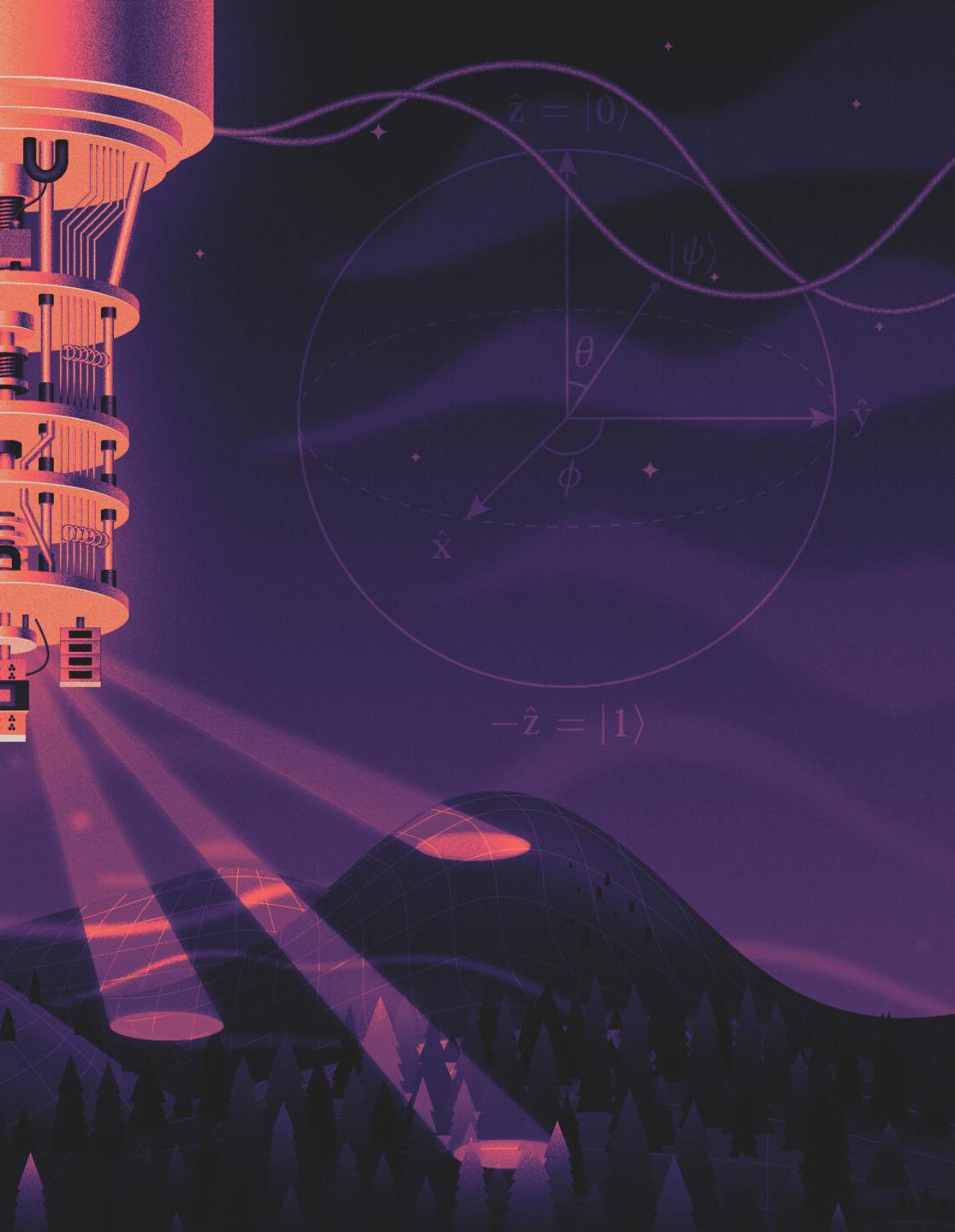


n our rapidly advancing technological landscape, arti昀椀cial intelligence (AI) has become a powerful tool with both positive and negative implications. One of the most concerning aspects of AI is the rise of “deepfakes”—highly realistic fake images and videos created using open-source AI tools. These digital forgeries have the potential to wreak havoc on society, impacting everything from politics to business reputation.
Deepfakes are created by manipulating existing images orvideostomakethemappearauthentic.Usingintuitive user interfaces and drag-and-drop functionality, even non-experts can produce these convincing fakes. Whether for mischief or malice, deepfakes can easily depict corporate executives or politicians saying in昀氀ammatory things they never actually uttered. The believability and viral reach of these videos can take “fake news” to new heights.
Executives who understand AI recognize that the use of AI to create falsehoods is a top ethical risk. Authentic videos of executives or employees behaving poorly can harm a company’s public perception and stock price. Imagine the impact when deepfake videos, designed to provoke anger and derision, go viral. Moreover, tech and media companies could face legal liability for spreading “fake news” and other misleading content intentionally.
To combat this menace, a partnership between tech companies and governments is essential. Social networks and search 昀椀rms have pledged to detect and remove false information, but deepfake videos pose a uniquechallenge. Researchershavedevelopedmethods to detect manipulated images using deep learning. For instance, most deepfake videos exhibit abnormal blinking patterns in the subjects’ eyes. Algorithms can analyze these patterns to separate fact from 昀椀ction.

Just like the Eagles’ song suggests, it’s hard to conceal lies. AI can counter deepfakes by exposing them, ensuring truth wins. But as deepfake creators evolve, AI must also advance to detect new tricks. In essence, AI can both create and detect deepfakes. To keep our digital world genuine, we must use AI wisely and keep improving our detection tools.
Entertainment and Creativity: Deepfakes allow artists and 昀椀lmmakers to create realistic scenes, merging historical 昀椀gures or celebrities into 昀椀ctional narratives. Impersonations in movies or comedy sketches become more convincing and entertaining.
Special Effects and CGI Enhancement: Deepfakes can enhance special e昀昀ects in movies, making fantastical creatures or characters appear more lifelike. CGIheavy scenes bene昀椀t from seamless integration of real actors with digital elements.
Training and Simulation: Deepfakes aid in creating realistic training scenarios for professionals (e.g., medical simulations, military drills). Simulating realworld situations helps improve decision-making skills.
Preserving Cultural Heritage: By animating historical 昀椀gures, deepfakes can bring the past to life, making it engaging for younger generations. Ancient artworks and artifacts can be animated to provide context and understanding.
Misinformation and Fake News: Deepfakes can spread false narratives, a昀昀ecting public opinion and trust. Political leaders, celebrities, or ordinary individuals can be targeted with manipulated content.
Privacy Violations: Personal privacy is at risk as anyone’s face can be superimposed onto explicit or compromising content. Revenge porn and cyberbullying are ampli昀椀ed by deepfakes.
Security Threats: Deepfakes can be used for identity theft, bypassing biometric security systems. Corporate espionage and 昀椀nancial fraud are potential risks.
Insummary,whiledeepfakeso昀昀ercreativepossibilities, their misuse poses signi昀椀cant challenges. Striking a balance between innovation and responsible use is crucial for a safer digital landscape.
DISCOVER YOUR INNER CLUTCH AND GO ON AN EXCITING ADVENTURE THROUGH osint ctf LAND'S RABBIT HOLE!

Take part in the thrill of OSINT CTFs, where you can use digital tools to crack codes and transform into an actual super spy. Your secret mission calls to you. Are you willing to take on the challenge?
Hello everyone, are you feeling lucky? If you enjoy gathering information and testing your skills, OSINT CTF tournaments are perfect for you! Let me tell you about an exciting adventure. As a top-notch detective having a great time, you'll push yourself like never before in these thrilling competitions. OSINT events involve using public information to solve puzzles, while other CTFs focus on hacking and investigation for fun. Get ready to showcase your spy skills at the highest level!

Imagine a contest where you can only use the internet as your toolbox. That's what sets OSINT CTFs apart and makes them so thrilling! You'll face challenges that range from exploring the dark web to digging through social media pro昀椀les. Sometimes you'll hunt for hidden hints on websites, and other times, you'll need to piece together information from various platforms like a skilled investigator.
Participating in OSINT CTFs is incredibly rewarding! Not only will you experience excitement during the competition, but you'll also gain practical skills that can turn you into a top-notch spy. By learning new techniques and using di昀昀erent tools, you'll improve your investigative abilities signi昀椀cantly. Plus, engaging with the amazing OSINT community will fuel your passion for uncovering secrets. This is where champions are made!
Let's go out there and show them what we're made of, team! Here are some expert tips before you start: start with a beginner-friendly CTF, gather the necessary tools, and join online forums for help. Face challenges directly, learning new skills each time. As a brainiac superstar, challenge yourself, aim high, and reach your full potential. YOU'VE GOT WHAT IT TAKES; NOW GO OUT THERE AND DEMONSTRATE YOUR SKILLS TO THE WORLD!
Attention OSINT enthusiasts, it's time to showcase your skills in CTFs! These events o昀昀er an e昀昀ective training ground. Grab your tools, dive into the challenges, and show o昀昀 your intelligence. You've got what it takes to succeed - let's do this!

Predictive Maintenance (PdM) aims to address maintenance needs to avoid costs associated with unplanned downtime ,By interfacing with devices and monitoring the data they produce, you can identify patterns leading to potential issues or failures, You can thenusetheseinsightstoaddressproblemsbeforetheyoccur,Thispredictivecapabilityallows you to anticipate when equipment or assets require maintenance, improving equipment lifespan and reducing downtime.
How long has the idea of predictive maintenance been around, and how does it work: The idea of PdM dates back to the early 1990s. At that time, the lack of sensor devices for data generation and the scarcity of computational resources for data collection and analysis made implementing PdM di昀케cult. Today, with advancements in the Internet of Things (IoT), cloud computing, data analytics, and machine learning, PdM can become prevalent. (PdM )starts with data. Ideally, data reveals equipment’s normal operation and condition before, during, and after failure events. Data comes from sensors, observations by equipment operators, operational and environmental data, device speci昀椀cations, and more. Data is provided for analysis in several ways.
The Team Data Science Process (TDSP) is tailored for manufacturing and does an excellent job of elucidating the various concerns one faces when building and deploying machine learning models. The 昀椀rst task is to identify the types of failures you want to predict. With that in mind, you can then pinpoint data sources containing relevant information about this type of failure. The underlying structure of the business process receives data within your environment. Data scientists utilize their preferred machine learning tools to prepare the data. At this stage, they are ready to create and train models capable of identifying various types of problems.
Once the models are developed and trained, they can be deployed:
• On the equipment itself for self-diagnosis.
• On edge devices in the manufacturing environment.
• On Azure.
Using Azure, you can train and test models according to the technology you choose. You can leverage GPUs, 昀椀eld-programmable gate arrays (FPGAs), CPUs, large memory devices, and more. Azure fully embraces open-source tools used by data scientists, such as R and Python. Once the analysis is complete, the results can be displayed in other facets of the dashboard or in other reports. These reports can appear in custom tools or in reporting preparation tools like Power BI.
We also talk about Azure IoT Hub, a fully managed service that enables reliable and secure bidirectional communications between millions of Internet of Things (IoT) devices and a cloud-based back end. It provides device authentication, message routing, integration with other Azure services, and management features for device control and con昀椀guration.
Azure Machine Learning is an enterprise-grade machine learning service for building and deploying models quickly. It o昀昀ers users of all skill levels a low-code designer, automated machine learning, and a hosted Jupyter notebook environment supporting various IDEs, Machine learning enables computers to learn from data and experiences and act without being explicitly programmed. Customers can create arti昀椀cial intelligence applications

that sense information, processit,andactintelligently, augmenting human capabilities, increasing speed and e昀케ciency, and helping organizations achieve more.
Ultimately, pdm works to enhance preventive maintenance schedules by identifying specific componentsforinspection, repair, orreplacement, thus optimizing time utilization.
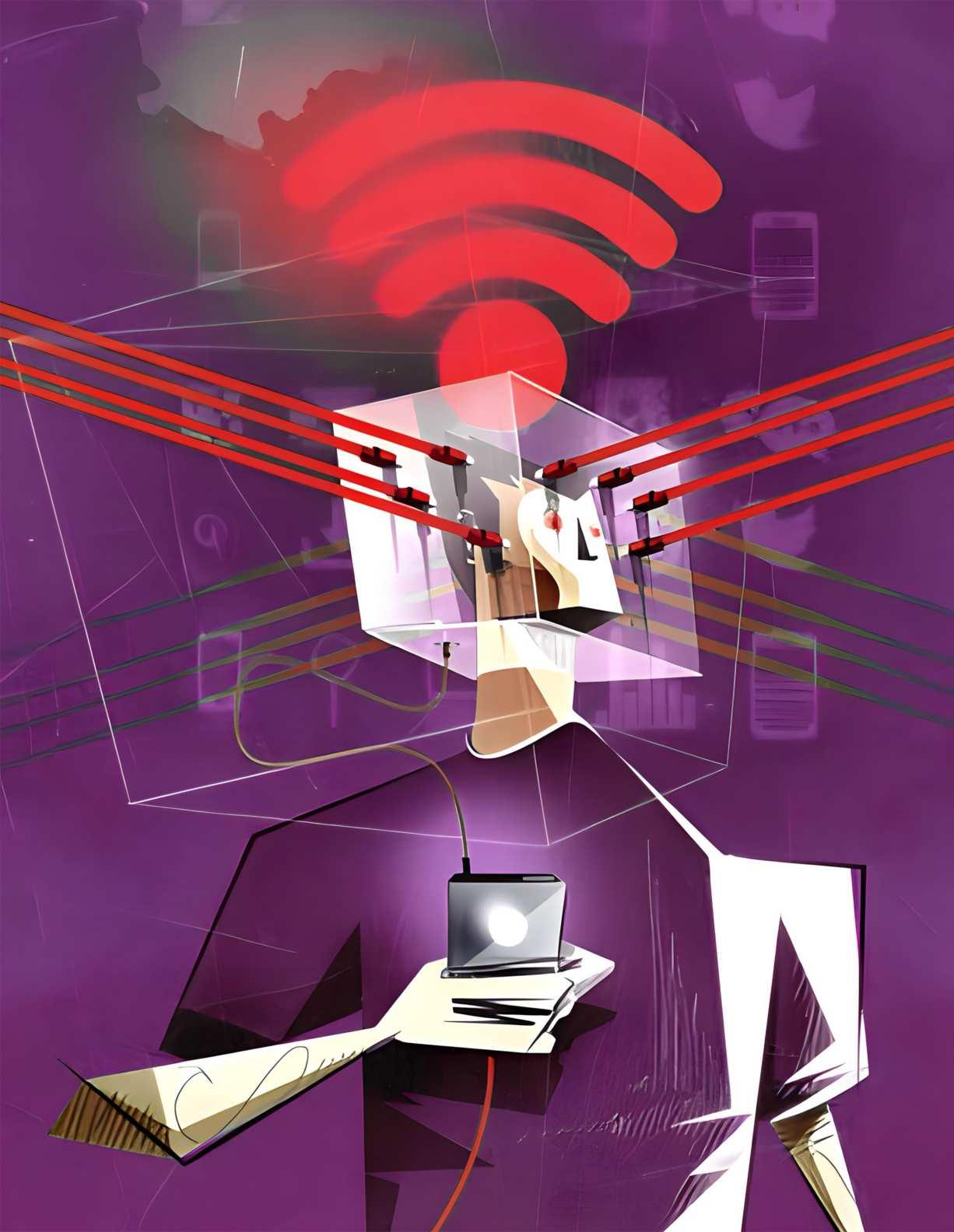

Greetings, urban explorers of the digital jungle! Today, we set forth on an expedition to the untamed wilderness of the cyber realm, armed not with compasses and binoculars, but with the NOTORIUS!! Tails OS – our gateway to the Dark Web . But fear not for this guarantees both security and anonymity in equal measure. So, strap in, get your cyber gear, and let’s embark on this adventure!
Gear Up for the Cyber Safari: Before we dive into the uncharted territory, let’s set ourselves up with our trusted ally – Tails OS. Imagine Tails OS as your digital survival kit, your cyber-safari transportation method. It’s a Linux-based operating system celebrated for its commitment to privacy and anonymity. And guess what? It conveniently 昀椀ts into a USB drive, ready to accompany you on your adventure!
Setting Up Camp: Now, let’s dive into the thrill of installing Tails OS! Fear not, for the process is as straightforward as following a YouTube tutorial . First, acquire a USB stick (8GB or larger), then head over to the Tails website. Download the Tails OS image and follow the installation instructions,whichareclearanduserfriendlyOnceyou’vecompletedthisdigitalquest,congrats! You’ve equipped yourself with a cyber-shield of anonymity!
Venturing into the Cyber Wilderness: With Tails OS at our disposal, it’s time to venture into the heart of the cyber wilderness – the Dark Web. Launch Tails from your USB drive, and just like that, you’ll be greeted by the ultimate beginners guide for complete anonymity from multi level disk encryption to a clean OS every time you remove your USB and put it back in if its a security measuretailsgotyoucovered.Butholdyourhorses!Beforeyouleapintotheurbanundergrowth, remember the golden rules of the Dark Web – tread cautiously, -like a sheep around wolves,Don’t !! trust anyone and never download anything unless you got tails of course. go wild :) you are a sheep with armor now.
discovering Urban Secrets: Ah, now the real adventure unfolds! Explore the hidden nooks and corners of the Dark Web, where secrets are like urban legends. Engage in conversations with fellow urban explorers, swap tales, or perhaps stumble upon some digital treasures. But remember this, in this concrete jungle, anonymity is your shield.
The Return to Civilization: As all urban escapades must end, so too must our journey into the cyber wilderness. Fear not, for Tails OS will safely guide you back to the hustle and safety of everyday browsing. Simply shut down your system, remove the USB drive, and like a phantom in the city night, you’ll vanish without a trace. the end
And thus, dear readers, we bid farewell to our urban nature adventure, armed with nothing but Tails OS and a spirit of curiosity. Remember, the cyber realm is a vast urban landscape, 昀椀lled with mystery and marvels . With the right tools and a sprinkle of caution, who knows what adventures await? So, until our next time, happy browsing, and may your cyber-safari be 昀椀lled with laughter, learning, and a dash of mischief! Here’s to the bold urban explorers who dare to navigate the digital unknown!
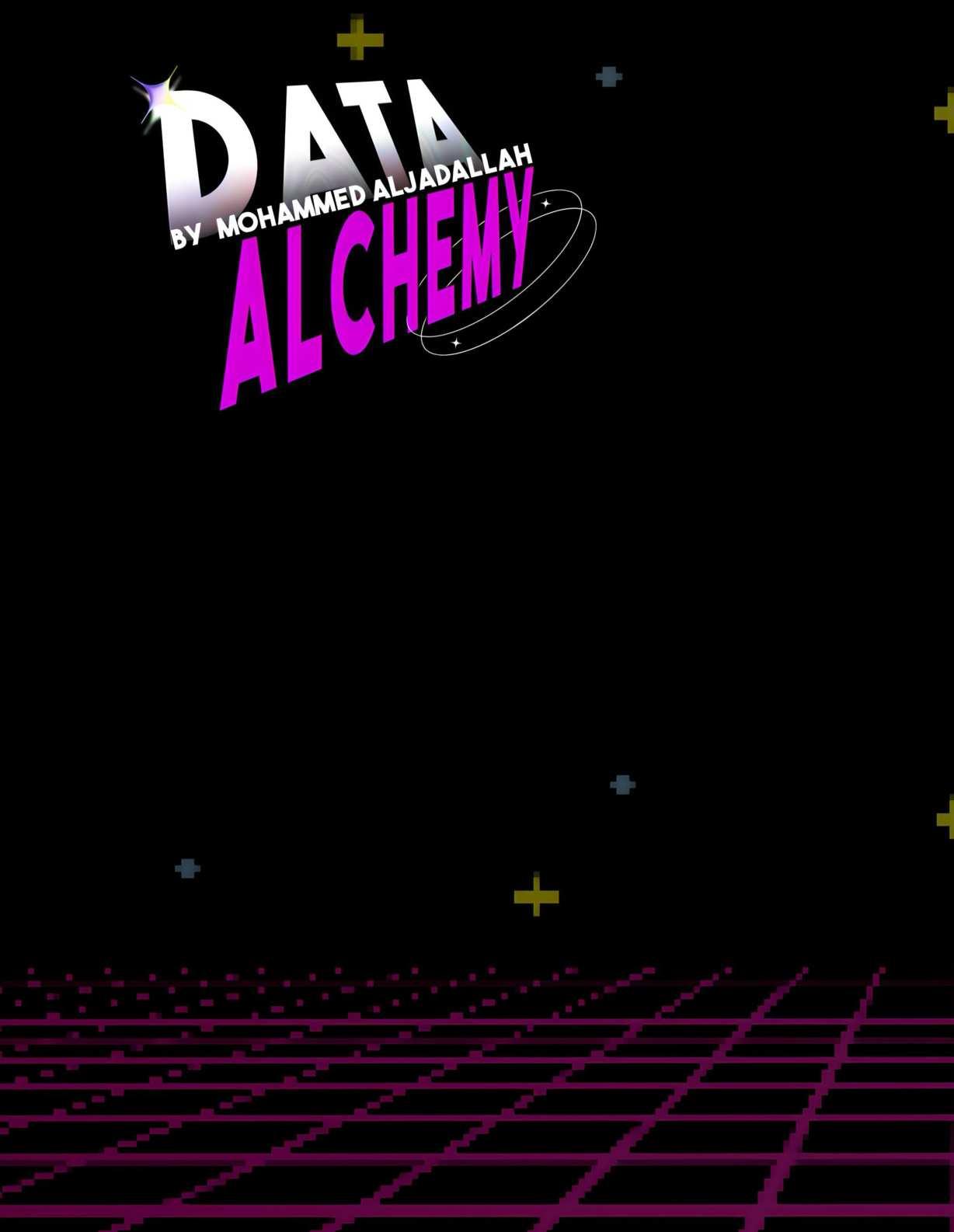
in today’s digital landscape, the signi昀椀cance of data cannot be overstated. Enter the realm of “data alchemy,” a transformative process akin to magic that converts raw data into potent shields safeguarding our digital realm from pernicious threats. Let’s delve into the intricacies of this alchemical method, broken down into four essential steps fueled by the prowess of arti昀椀cial intelligence (AI).
At the outset, the focal point is data acquisition—an indispensable ingredient in the alchemical recipe. Picture data is scattered morsels of information strewn across the vast expanse of the internet, generated through online activities such as browsing, messaging, and interaction with websites. This initial gathering phase lays the foundation for the alchemical process, akin to amassing the necessary components for a spell.
Hereinliestheroleofthesorcerer—AI,whichdiligentlysiftsthroughtheamasseddata, unveiling hidden correlations and patterns. By discerning potential vulnerabilities and perils, AI illuminates the path to forti昀椀cation. Through sophisticated algorithms and deep learning techniques, AI extracts valuable insights from troves of data, revealing connections that elude human observation. This phase serves as the catalyst for the alchemical transformation, as raw data is transmuted into actionable intelligence.
Armed with insights gleaned from data, AI conjures formidable shields—impermeable barriers poised to intercept and neutralize potential threats. These shields stand sentinel, fortifying our digital bastions against the encroachment of danger. Drawing uponpredictiveanalyticsandthreatdetectionalgorithms,AIconstructsamulti-layered defense system capable of thwarting even the most sophisticated cyberattacks. This phase represents the culmination of the alchemical process, as abstract insights are materialized into tangible safeguards.
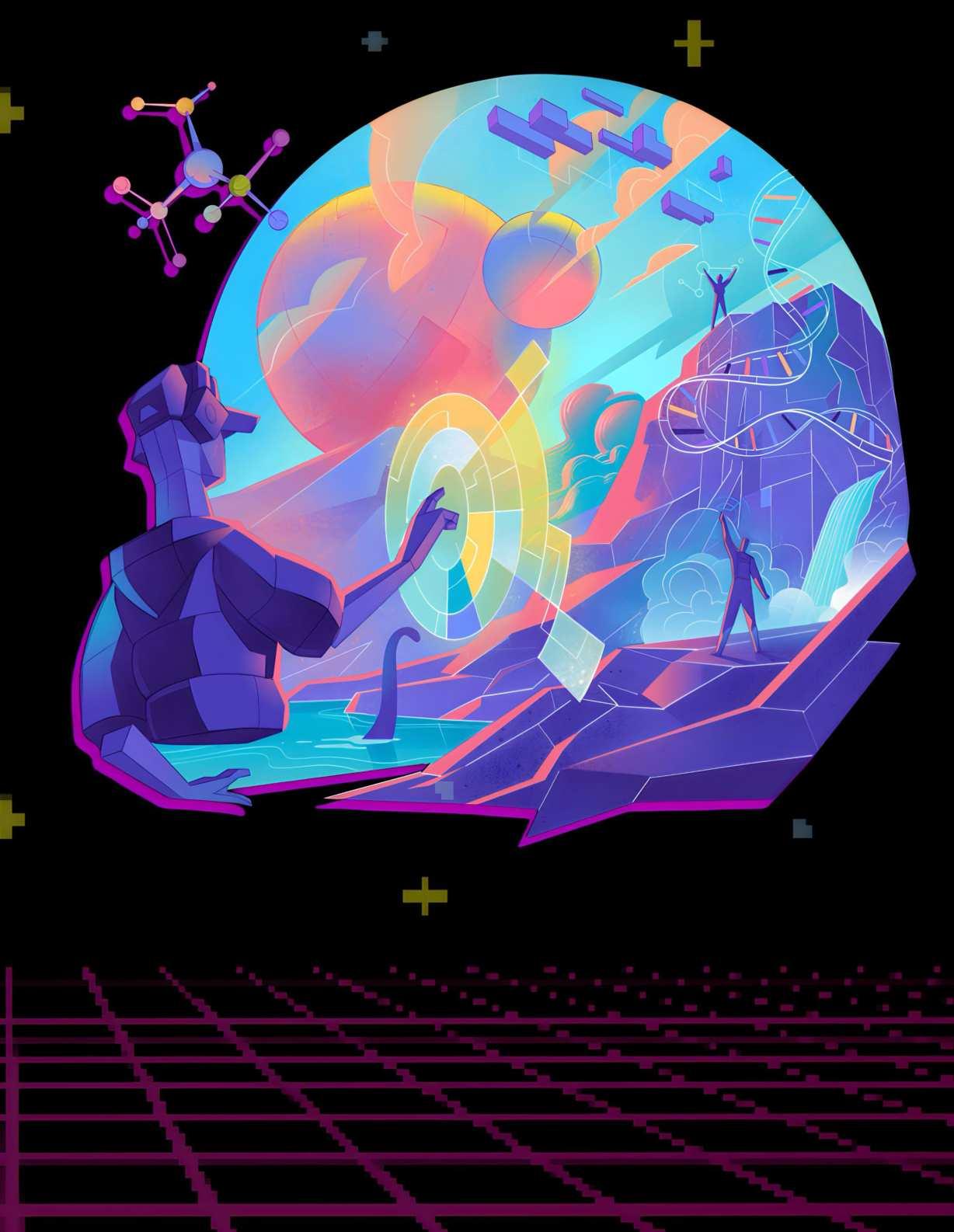
AI’s mettle lies in its perpetual evolution and adaptation. Like a vigilant sentinel, it learns from each encounter, fortifying and re昀椀ning the shields in response to evolving threats. Through continuous monitoring and feedback mechanisms, AI remains attuned to emerging vulnerabilities, ensuring that the defense remains steadfast and impervious to the shifting sands of cyberspace. This iterative cycle of improvement embodies the essence of data alchemy, as AI harnesses the power of data to create resilient defenses capable of withstanding the test of time.
In the realm of data alchemy, AI emerges as the quintessential alchemist, transmuting raw data into invaluable insights and impenetrable defenses. Through its cognitive prowess, AI not only comprehends the intricacies of data but also proactively safeguards our digital citadels against malevolent forces. This perpetual process of learning and adaptation ensures that our digital realm remains impregnable against the ever-looming specter of online threats

Increased empathy: For many humanitarian organizations, VR is the perfect tool for raising awareness of social and environmental issues. The immersive technology puts users in ‘someone else’s shoes’, and goes above and beyond traditional 2D depictions of war, abuse, pollution, neglect, or injustice. It allows viewers to see directly through the ‘eyes’ of a real or imagined subject and more speci昀椀cally, VR can create ‘embodied cognition’. It forces the user not just to ‘see’ from another perspective, but to experience a complete transformation of the self. What the VR avatar looks like, they look like. Users are no longer passive spectators, but ‘real-life’ participants in the action. Their intellectual and emotional grasp of an experience is matched by a feeling of embodiment: a sense that they are ‘physically’ present in the virtual world.
This radical, emotive immersion achieves a variety of things. First and foremost, it cultivates heightened feelings of empathy, compassion and understanding, allowing users to strongly relate to their virtual avatar. Secondly, it has a proven e昀昀ect on users’ actions. According to Stanford scholars, people who experienced a 7-minute VR piece on homelessness were more likely to sign a petition for a昀昀ordable housing than those who interacted with written/2D media on the same topic. In other words, VR doesn’t just encourage empathy, it transforms empathetic feeling into altruistic action.
: VR, however, isn’t just an ‘empathy machine’. It’s also an ‘equality machine’, helping to make education more accessible. It has the potential to help achieve one of the UN’s 17 ‘Sustainable Development Goals’, bringing quality educational opportunities to impoverished families, women, rural communities, and developing regions.
With virtual technology, access to expensive, complex educational equipment doesn’t have to be the privilege of the wealthy. Educators who can’t a昀昀ord costly science equipment (or the sta昀昀 necessary to maintain it safely) can use VR headsets to simulate scienti昀椀c experiments at a fraction of the cost, with lower risk to students and higher rates of retention. In theory, the experience could also contain virtual avatars of some of the world’s top scienti昀椀c minds, allowing access to industry experts without needing them to be ‘really there’. VR can also make educational 昀椀eld trips cheaper and easier. Initiatives like Google’s ‘Expeditions’ allow students to experience culturally signi昀椀cant venues like the Guggenheim Museum of Art in virtual space, removing the need for travel costs.
Crucially, as VR hardware develops, virtual reality’s educational potential becomes even greater. The development of ‘standalone’ headsets such as the Oculus Quest don’t require any external processors or sensors. This makes them less expensive and simpler to operate whilst remaining interactive, allowing educators to adopt the technology more easily and at a larger scale.
Treatment for Phobias: Virtual reality ‘medicine’ is still in early, experimental phases, lacking the hard evidence needed for mass adoption. Nevertheless, initial research suggests that VR could be e昀昀ective in treating phobias.
One study tested the idea that VR exposure therapy could reduce its participants’ fear of heights. Using VR, users could explore simulated high buildings whilst being coached by a virtual therapist. After six VR sessions, the participants’ fear of heights almost halved. By contrast, participants who received ‘usual care’ had no change in their levels of anxiety. These 昀椀ndings are far from conclusive, with a relatively small test-group and short test-period. However, it points towards VR as an emergent medium for exposure treatment, o昀昀ering therapists a more immersive, more 昀氀exible, safer (and theoretically more e昀昀ective) method of allowing patients to ‘face their fears’. Virtual phobia-solutions also have the additional bene昀椀t of requiring no face-to-face interaction between the patient and therapist – reducing costs and replicable for a large user-base. Similarly, initial trials have been planned in conjunction with the NHS to test virtual reality’s ability to treat patients with psychosis.



You may doubt its truth, but unfortunately no. Why and how does that happen? Well, that is what you are going to 昀椀gure out today.
Let’s start with how? Your phone is how and in the future, it will be your car, house, and you name it. YOUR PHONE COLLECTS NUMEROUS DATA ABOUT YOU THAT YOU CAN'T EVEN COUNT. Here I’m not only talking about the operating system itself but the applications on your device, and YOU allowed them to do that. sometimes apps request permissions for functionalities they do not even need, like Uber asking for access to your camera (what on earth does Uber need my camera for?). And it’s not just them; it’s a bunch of other apps too. I learned an invaluable life lesson from studying cybersecurity: there is nothing for free; they are going to bene昀椀t from something somehow.
To “exist” online, you have to publish things to share. Nowadays, data is the raw material of the knowledge economy. They repeatedly monetize your data over and over, but it’s not only about the money; it’s also about control. In nations like China, the government uses data to control people by creating a digital pro昀椀le for each person, including what they do, who they know, and even what they say. Based on this, people are scored within a “social credit” system, determining whether they receive rewards or penalties based on their behavior.
The Big Brother nightmare has become our reality and is no longer a nightmare. With the development of quantum computing and increasingly powerful computers, some of the encryption techniques we use today may become useless. That means not only the big companies will have your data but other threat actors as well. Not only that, threat actors have been carrying an attack called “store-now-decrypt-later” (SNDL). As the name implies, it’s about storing encrypted data to potentially decrypt it later with more powerful computers. So, not only you do have no privacy now, but any privacy you thought you had in the past will also vanish.
To close, the digital world o昀昀ers convenience, but at a price. Just like anything in life, there are a trade-o昀昀s; the convenience we enjoy comes at the expense of our privacy. We need to 昀椀nd a balance. And ALWAYS REMEMBER, THE BIG BROTHER IS WATCHING.
Metaverse: And how it will revolutionize everything by Matthew Ball. BondFire project smoke signals newsletter by Joe Whitcomb. Article on VR by Harshith k das.
beyond words
Arti昀椀cial Intelligence for Sign Language Translation - A Design Science Research Study: https://www.researchgate.net/publication/370215194_Arti昀椀cial_Intelligence_for_Sign_ Language_Translation_-A_Design_Science_Research_Study
(PDF) Arti昀椀cial Intelligence Technologies for Sign Language: https://www.researchgate. net/publication/354281440_Arti昀椀cial_Intelligence_Technologies_for_Sign_Language
crypto chronicles
NFTMarketplaces:ThislinkprovidesinformationaboutvariouspopularNFTmarketplaces where people can buy and sell digital assets like the “Rare Collectible: https://opensea.io/
Decentralized Finance (DeFi): https://consensys.io/knowledge-base/de昀椀
cyber security vs digital forensics
Computer Forensics vs. Cyber Security | DeVry University: https://www.devry.edu/onlineprograms/area-of-study/cyber-security.html
What’s the di昀昀erence between cyber security and digital forensics? - Portsmouth Online: https://www.port.ac.uk/study/courses/postgraduate-taught/msc-cyber-security-anddigital-forensics-distance-learning
the story has no ending
The World Intellectual Property Organization (WIPO). https://www.wipo.int/tech_trends/ ar/arti昀椀cial_intelligence/story.html
the battle between codemakers and codebreakers
Post-Quantum Cryptography: https://csrc.nist.gov/Projects/Post-Quantum-Cryptography

DEEPFAKES: THE DOUBLE-EDGED SWORD OF SYNTHETIC REALITY
[2208.10913] Deepfake: De昀椀nitions, Performance Metrics and Standards, Datasets and Benchmarks, and a Meta-Review - arXiv(https://arxiv.org/abs/2208.10913)

Discover Your Inner Clutch and Go on an Exciting Adventure Through OSINT CTF Land's Rabbit Hole! CTF Academy - Open Source Intelligence: https://github.com/topics/ctf
Top 15 Best CTF For OSINT Practice: https://imshewale.medium.com/complete-osintfundamentals-fd7848663588
the future can be predicted
Introduction to predictive maintenance in manufacturing - Azure Architecture Center: https://learn.microsoft.com/en-us/azure/architecture/industries/manufacturing/ predictive-maintenance-overview
tails os
Tails Website: https://tails.net/
Tor Project Website: https://www.torproject.org/
data alchemy
The Role of AI in Cybersecurity: A Data-Driven Approach: https://www.forbes.com/sites/ forbestechcouncil/2024/02/15/ai-in-cybersecurity-revolutionizing-safety/
Data for Defense: https://www.technologyreview.com/2022/12/19/1064921/ai-baseddata-analytics-enable-business-insight/
vr will reshape the fabric of our existence
Stanford News Article on VR and Empathy: https://news.stanford.edu/2022/12/14/vrreal-impact-study-昀椀nds/
Bazian Article on VR and Fear of Heights: https://www.frontiersin.org/articles/10.3389/ fcomp.2021.652550
you have no privacy, get over it
There is No Such Thing as True Privacy in the Digital Age” by Government Technology: https://www.govtech.com/security/there-is-no-such-thing-as-true-privacy-in-the-digitalage.html
